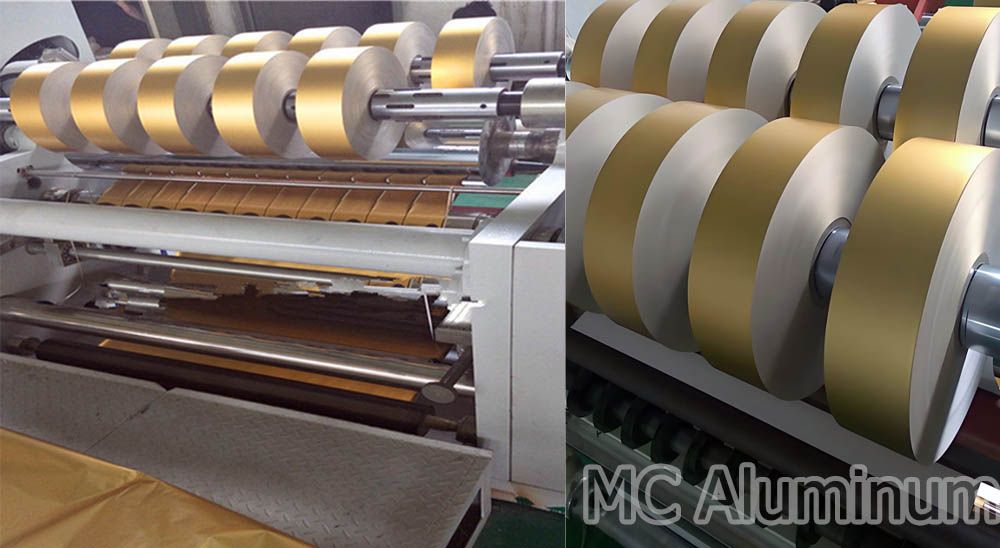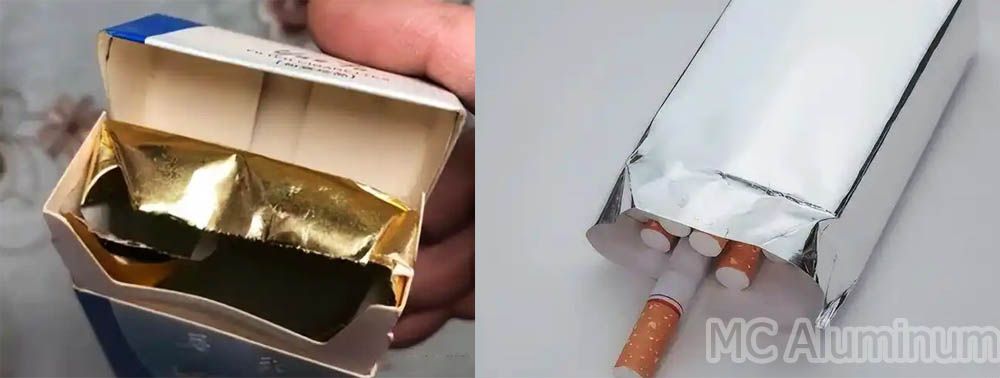When you tear open a pack of cigarettes, the first thing you usually notice isn't the cigarettes themselves-it's that layer of shimmering silver or gold paper. Accompanied by a crisp tearing sound, the unique aroma of the tobacco wafts out.
This seemingly inconspicuous "silver paper" is technically called cigarette inner liner aluminum foil (Cigarette Inner Liner). Its purpose goes far beyond aesthetics-it is the ultimate barrier for tobacco freshness. Thanks to its unique properties and multifunctionality, aluminum foil has become the preferred material for cigarette packaging.
What Is Cigarette Packaging Aluminum Foil?
Cigarette packaging aluminum foil is an important component of cigarette lining materials. It typically uses 1235 or 8011 aluminum foil as the base material and is usually laminated with paper to form aluminum foil paper, used to wrap cigarettes or line cigarette boxes. Its core functions are to block moisture, retain aroma, and enhance the packaging quality; it is considered a high-value-added functional material in the cigarette industry.

Manufacturing Process of Cigarette Packaging Aluminum Foil
1. Aluminum Foil Rolling
Aluminum ingots (1235/8011) are melted and cast into thicker coils. Through multiple high-speed rolling processes on cold rolling mills, the aluminum sheet becomes increasingly thin. In the final stage, the aluminum foil becomes so thin that the machine cannot pass through a single layer. Workers stack two layers of aluminum foil together for rolling.
The reason cigarette aluminum foil has one shiny side and one matte side is that the outer side, which contacts the rolls, is shiny, while the inner side, where the two layers of aluminum foil meet, has a matte, frosted texture.
2. Lamination
This is the core step in manufacturing cigarette inner liner paper. On a laminating machine, a liquid adhesive is evenly applied to the surface of the aluminum foil (or liner paper). Subsequently, the extremely thin aluminum foil is pressed together with the roll of base paper under high pressure. After drying and curing, the aluminum foil and paper fuse together, becoming "aluminum foil paper." At this point, it possesses both the luster of metal and the toughness of paper.
3. Coloring and Printing
The inner lining of cigarettes can be coated with gold, red, or black, etc., according to customer requirements, using food-grade paint. If the brand requires a logo, gravure printing will be used to print the brand logo or anti-counterfeiting pattern.
4. Embossing
The surface of cigarette foil is usually covered with fine textures or raised patterns, which not only gives the foil an aesthetically pleasing texture but also increases the material's strength and stiffness. Tobacco brands often customize unique embossed patterns as part of their brand identity.
5. Slitting
The huge master roll is fed into a slitting machine, where it is precisely cut into smaller rolls, typically 80mm-114mm wide, according to the specifications of the cigarette packaging machine. These are then packaged and sent to the cigarette factory.

Why Cigarettes Must Use Aluminum Foil
1. Excellent Barrier Properties
Aluminum foil has virtually zero water vapor transmission rate (<0.01 g/m²·24h), providing strong oxygen barrier properties that effectively prevent tobacco oxidation. Its moisture-proof properties keep cigarettes dry during long-term storage.
2. Dead-fold Characteristic
This is a unique physical property of aluminum foil. When you fold a piece of plastic, it springs back; but when you fold aluminum foil, it maintains the fold angle. This characteristic is crucial in high-speed cigarette packaging machines (producing hundreds of packs per minute). It ensures the packaging paper adheres tightly to the cigarette, with clear folds, preventing it from loosening and springing open.
3. Ultimate Corrosion and Light Protection
Light exposure can cause the chemical components in tobacco to degrade. Aluminum foil is completely opaque, effectively preventing photo-oxidation. Simultaneously, the oxide layer on the aluminum surface makes it corrosion-resistant, ensuring safe long-term storage.
